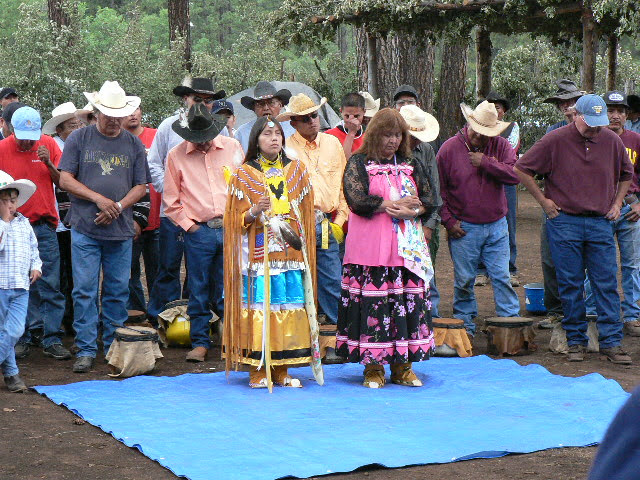The White Mountain Apache Tribe is one of the most historically and culturally significant Native American tribes in Arizona. Known for their resilience, the tribe has maintained a strong connection to their traditions while adapting to modern challenges. Located in the eastern part of the state, the White Mountain Apache Tribe’s lands encompass part of the White Mountain National Forest, an area that has played a critical role in shaping the tribe’s culture and lifestyle. Through centuries of perseverance, they have upheld their heritage, preserved their language, and made notable contributions to both Arizona and the broader Native American community.
The tribe’s legacy is rooted in the early struggles for survival and sovereignty. During the 19th century, the tribe endured numerous hardships, including forced relocations and conflicts with settlers. Despite these challenges, the White Mountain Apache Tribe’s determination to preserve their culture and lands led to their establishment of the Fort Apache Reservation, which remains the heart of their community today. This article explores the fascinating history, cultural practices, modern-day achievements, and environmental stewardship of the White Mountain Apache Tribe, highlighting the importance of their enduring connection to the land.
The History of the White Mountain Apache Tribe
The history of the White Mountain Apache Tribe stretches back thousands of years, with their ancestors inhabiting the southwestern United States long before European settlers arrived. Their deep roots in the region are reflected in their intricate cultural practices, language, and social structure. The White Mountain Apache Tribe, along with other Apache groups, shares a common ancestry, but their history has been uniquely shaped by their geography, particularly the White Mountains in Arizona.
In the 1800s, the tribe faced significant upheaval as they fought to protect their lands and way of life from European encroachment. The establishment of the Fort Apache Reservation was a pivotal moment for the White Mountain Apache Tribe. The tribe, under the leadership of figures like Geronimo, resisted external control and struggled to maintain their autonomy in the face of overwhelming odds. This period marked a turning point in the tribe’s history, as it moved from a nomadic existence to one based around a reservation system, setting the stage for the future development of the White Mountain Apache Tribe.
Culture and Traditions of the White Mountain Apache Tribe
The culture of the White Mountain Apache Tribe is rich and varied, deeply tied to their spiritual beliefs and the land they inhabit. One of the most important aspects of their culture is their connection to nature, which is reflected in their spiritual ceremonies and rituals. The tribe has long practiced animism, believing that natural elements, such as animals, trees, and rocks, hold sacred power. Ceremonial dances, prayers, and songs are integral parts of Apache life, often performed to honor deities or mark significant events.
Language is another cornerstone of White Mountain Apache culture. The tribe’s language, a part of the Athabaskan language family, has been a vital tool for passing down history and traditions. In recent years, there has been a strong push within the community to revitalize the Apache language, especially among younger generations. Storytelling is also central to their culture, with elders sharing tales that communicate lessons, history, and values to the younger members of the tribe. Through these practices, the White Mountain Apache Tribe continues to preserve its identity and ensures that their cultural heritage is carried on for generations to come.
Modern-Day White Mountain Apache Tribe

In the present day, the White Mountain Apache Tribe remains a vibrant community with a population of around 14,000 people. The tribe has made significant strides in economic development, education, and healthcare while maintaining a strong connection to their cultural roots. The Fort Apache Reservation, located in the eastern part of Arizona, serves as the heart of the tribe’s cultural and administrative activities. This reservation is not only the home of the White Mountain Apache Tribe but also an important center for preserving Apache traditions and customs.
Economically, the tribe has diversified its resources through ventures in tourism, gaming, and natural resource management. The White Mountain Apache Tribe is well known for its world-class hunting, fishing, and outdoor recreation opportunities, attracting visitors to their land and providing economic benefits to the community. Additionally, the tribe has been proactive in developing educational and healthcare programs, such as the White Mountain Health Center, to ensure that its people have access to vital services. These advancements have allowed the White Mountain Apache Tribe to thrive while retaining their cultural identity in a rapidly changing world.
The White Mountain Apache Tribe’s Connection to the White Mountain Region
The White Mountain Apache Tribe’s connection to the land is deeply ingrained in their culture and history. Located within the White Mountain National Forest, the tribe’s ancestral lands are rich in natural resources that have sustained them for centuries. The rugged terrain, dense forests, and diverse wildlife offer a unique environment that has shaped the tribe’s way of life. For generations, the White Mountain Apache Tribe has relied on these resources for sustenance, medicine, and spiritual connection.
One of the most important aspects of the tribe’s relationship with the land is their commitment to environmental stewardship. The White Mountain Apache Tribe has long practiced sustainable land management, ensuring that the resources they rely on remain abundant for future generations. They actively manage the forests, rivers, and wildlife within their lands, protecting species such as the white mountain ermine. By balancing the needs of the environment with those of their community, the White Mountain Apache Tribe continues to serve as a model of responsible land stewardship and cultural preservation.
Key Contributions of the White Mountain Apache Tribe to Arizona and Beyond
The White Mountain Apache Tribe has made significant contributions to both Arizona’s cultural heritage and the broader Native American community. The tribe’s vibrant arts and crafts scene, which includes intricate beadwork, basketry, and pottery, showcases their rich cultural traditions and has gained recognition both within and outside the Native American community. These works of art are not only functional but also serve as expressions of the tribe’s history and values.
Beyond the arts, the White Mountain Apache Tribe has also made strides in improving the quality of life for its members. Their investment in healthcare, through institutions like the White Mountain Health Center, has helped to address the health needs of the tribe. Similarly, their focus on education has provided opportunities for tribal members to learn about their history, culture, and the world around them. These contributions are a testament to the tribe’s resilience and determination to build a brighter future for its people.
Conclusion
The White Mountain Apache Tribe stands as a beacon of strength, culture, and resilience in Arizona. Through their rich history, cultural traditions, and modern-day achievements, the tribe has shown an unwavering commitment to preserving their heritage while adapting to the challenges of the modern world. Their connection to the White Mountain region, combined with their dedication to sustainable land management and cultural preservation, ensures that the White Mountain Apache Tribe will continue to thrive for generations to come.
FAQs
- What is the history of the White Mountain Apache Tribe?
- Where is the White Mountain Apache Tribe located?
- What are the key cultural traditions of the White Mountain Apache Tribe?
- How has the White Mountain Apache Tribe preserved its language and customs?
- What industries contribute to the economy of the White Mountain Apache Tribe?
- How does the tribe manage its natural resources and wildlife?
- What healthcare services are available to the White Mountain Apache Tribe?
- What role does the Fort Apache Reservation play in the tribe’s history and present day?
- How can visitors learn more about the White Mountain Apache Tribe’s culture and traditions?
- What are the modern-day challenges and opportunities for the White Mountain Apache Tribe?
you may also read: Daily Forecast Patterns and What to Expect


